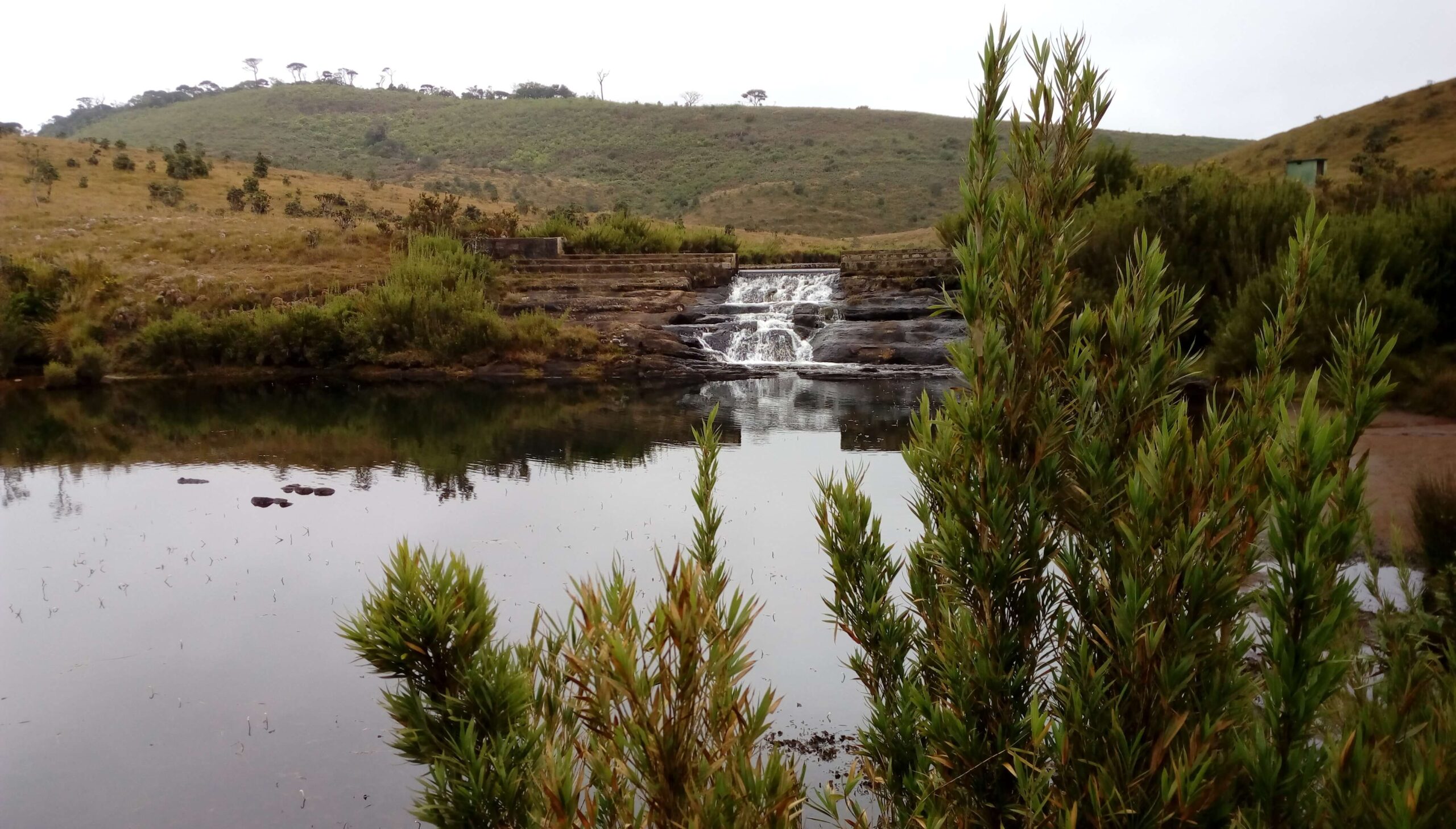Complete Travel Guide to Horton Plains Nature Trail
Horton Plains is one of those rare places where nature feels untouched and time slows down. Nestled high in the central highlands of Sri Lanka, this windswept plateau sits more than 2,000 meters above sea level, offering a landscape unlike anywhere else on the island.
Rolling grasslands meet cloud forests, streams tumble into hidden waterfalls, and sheer cliffs drop into misty valleys below. Walking the Horton Plains Nature Trail is the best way to experience this beauty, and this guide will take you through everything you need to know before lacing up your hiking shoes.
Getting to Horton Plains
The adventure begins long before your feet touch the trail. Horton Plains National Park sits high in Sri Lanka’s central highlands, accessible mainly from two routes — the winding road up from Nuwara Eliya via Pattipola or the equally scenic approach from Ohiya.
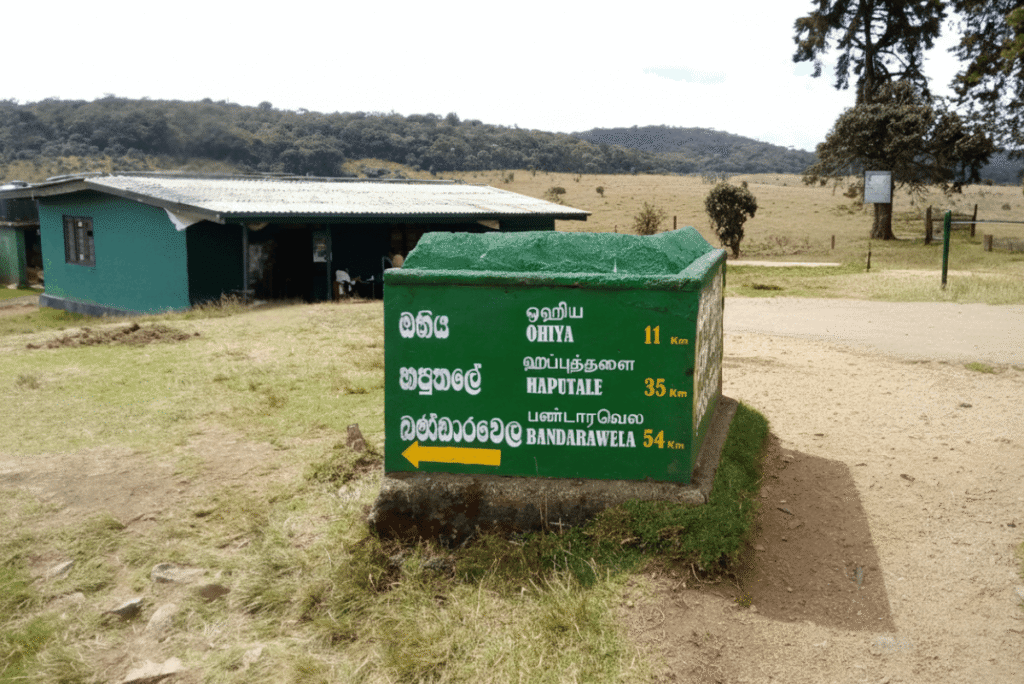
Both journeys are beautiful, with tea estates, pine groves, and misty hills guiding the way. Since I’ve written a full breakdown on routes, public transport options, and driving tips, I won’t go into detail here. Instead, check out this guide: How to Get to Horton Plains for everything you need.
Tickets and Entry Guidelines
Horton Plains is a protected national park, so entry requires a ticket. The price differs for locals and foreign visitors, and there is also a separate fee for vehicles if you plan to drive up.
Entry tickets are issued at the main entrance gate and will be checked at the visitor Centre. So it’s best to confirm the latest rates & payment options in advance.

Since it’s a conservation area, there are a few important rules to follow:
- Plastic ban: The park is serious about conservation. They’ll check your bags at the entrance and remove any single-use plastics (like wrappers and bottles).
- Opening hours: 6:00 AM to 4:00 PM (last entry by mid-morning to ensure you’re out on time).
- Littering is strictly prohibited.
- Feeding wild animals is forbidden.
More details can be found in Tickets & Visitor Guidelines.
Best Time to Visit
The plateau sits in the central highlands, which means cool weather year-round, often with a chilly breeze. The best time to visit is early morning, ideally between 6:00 AM and 9:00 AM.
At this hour, the skies are usually clear, giving you the best chance to see the sweeping views at World’s End before the mist rolls in.
For seasonal tips, climate advice, and sunrise recommendations, check out full guide on the Best Time to Visit Horton Plains.
Trail Overview – The Circular Route
The Horton Plains Nature Trail is an 9-kilometer circular route that takes around 3–4 hours to complete at a relaxed pace.
The trail itself is moderate—mostly flat with some rocky paths, steps, and stream crossings. Good walking shoes are a must, but you don’t need to be a professional hiker to enjoy it
Trail Start – The Beginning of the Journey
The trail begins just past the visitor center. It’s an easy, slightly uphill path surrounded by montane forest. Early in the morning, it’s often chilly, and the mist makes it feel like stepping into a fairytale.
Within a few minutes from the Entrance, the path splits into two directions—left or right. You can walk in either direction, but most travelers start by turning left .
This way, you’ll first encounter Mini World’s End, followed by the dramatic World’s End, before circling around to Baker’s Falls and the open grasslands. Going this way ensures you reach the viewpoints early, before clouds obscure them.

Mini World’s End
About 2 km into the hike, you’ll reach Mini World’s End, a smaller escarpment that still offers sweeping views over the valleys below.
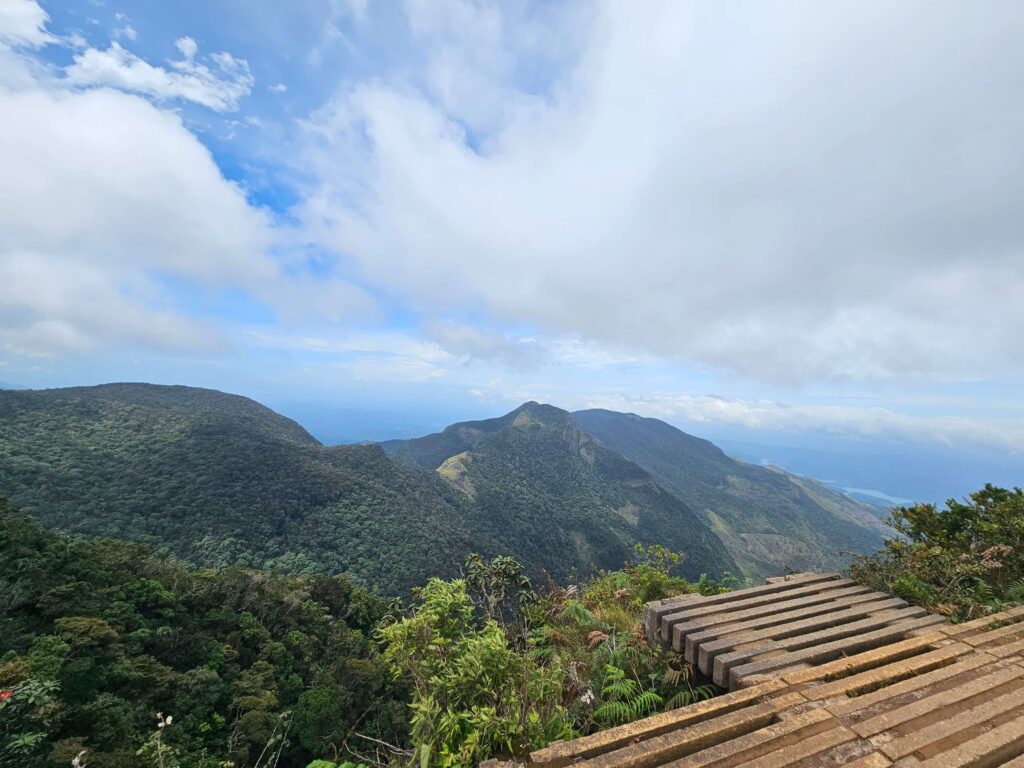
It’s a great warm-up for the main attraction. I paused here to sip my flask of hot tea, watching the first sunlight spill over the hills.
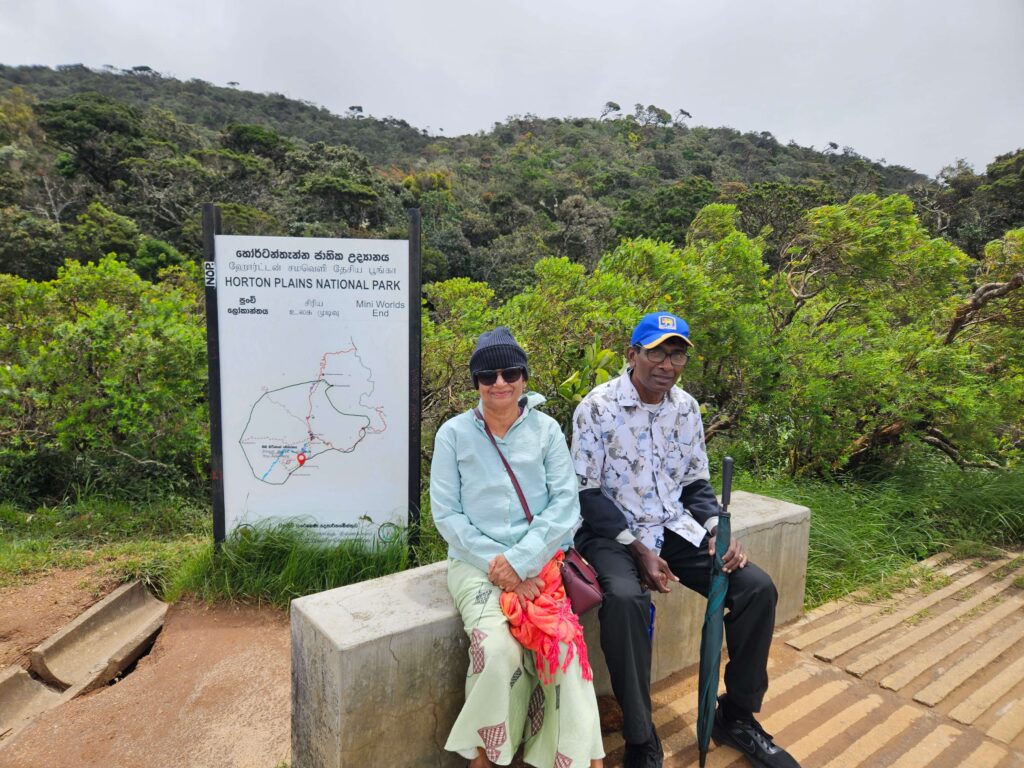
World’s End – The Showstopper
Another 1 km down the path is World’s End, a sheer cliff with an 870-meter drop. On a clear morning, you can see tea plantations, villages, and distant peaks stretching toward the southern coast. But wait too long and all you’ll see is a wall of white fog. That’s why starting early is crucial.

Grassland Plateau
After World’s End, the path opens into wide plains again. Here, the wind often whistles through the grass, and you’ll feel the vastness of Horton Plains.

Baker’s Falls
The trail then winds through grasslands and forest patches before descending to Baker’s Falls, a powerful cascade named after British explorer Sir Samuel Baker. The path here can be slippery, especially after rain, so tread carefully. The waterfall is framed by rhododendron trees, which burst into bright red blooms in season.

Red Bridge & Chimini Pond
Continuing along the loop, you’ll cross a charming red-painted wooden bridge over a small stream. Further along is Chimini Pond, a serene little pool framed by forest, perfect for a short break before you finish the trail.
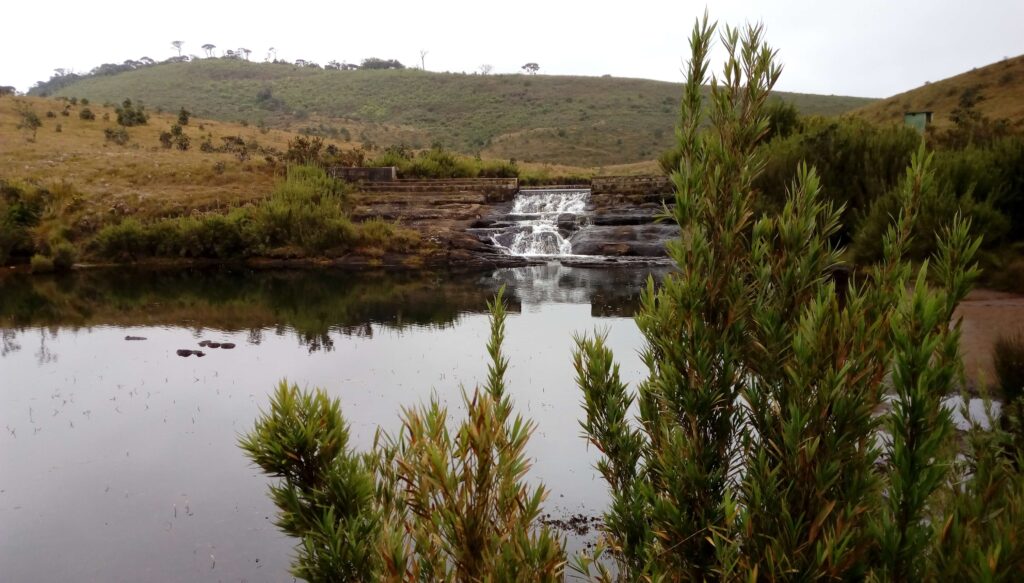
The Return Loop
From Chimini Pond, the path loops back through open plains, dotted with stunted trees and wildflowers. It’s quieter here, and if you’re lucky, you might spot a sambar deer grazing. Eventually, the loop closes back at the starting point, completing the circuit.
Wildlife and Flora You Might See
One of the delights of Horton Plains is that it’s not just about landscapes. The park is home to a fascinating variety of species.
Mammals: Sambar deer are almost guaranteed sightings. If fortune smiles, you might spot a leopard slipping between the grasslands.
Birds: Over 80 species, including endemics like the Sri Lanka white-eye and dull-blue flycatcher.
Plants: The plains are dotted with dwarf bamboo, montane grasslands, and colorful rhododendrons. Some species here are found nowhere else on earth.
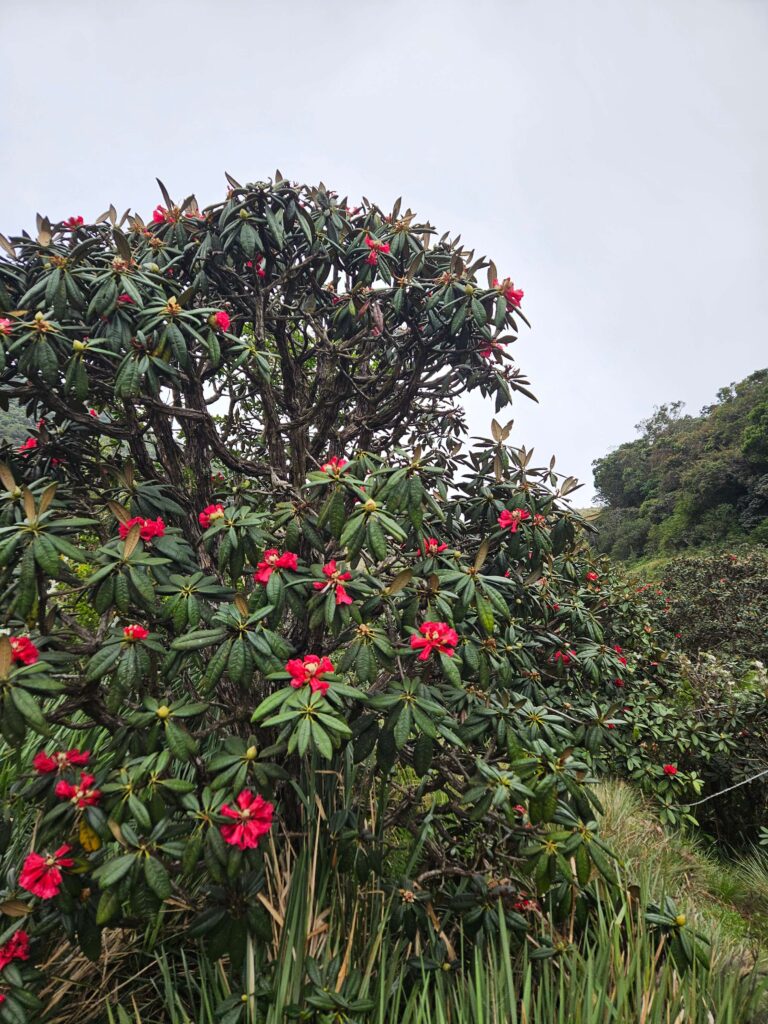
A vibrant red flowering tree found in Horton Plains National Park
Even if you’re not a wildlife enthusiast, keep your eyes and ears open — Horton Plains has surprises at every turn.

Travel Tips & Essentials
Start Early – The earlier you begin, the better the chance of clear skies at World’s End.
Dress in Layers – Mornings are chilly, but it warms up as the sun rises. A light jacket is ideal.
Wear Proper Footwear – Trails can be muddy and slippery, especially near Baker’s Falls. Hiking shoes or sturdy sneakers are essential.
Pack Snacks & Water – There are no shops inside the park. Carry reusable water bottles and some light snacks.
Mind the Altitude – At over 2,000 meters, some may feel a little short of breath. Take your time and rest when needed.
Photography Tips – Bring a wide-angle lens for landscapes, and be patient—sometimes the mist clears for just a few magical minutes.
Leave No Trace – Carry your waste back with you. The park’s fragile ecosystem depends on visitors being responsible.
Guided Tours or Solo Hike?
The loop is easy to follow, so most people hike independently. But going with a guide can make the experience richer, especially if you want to learn about the plants, animals, and hidden history of the plains.
Explore options here: Guided tour Packages.
Where to Stay – Accommodation Near Horton Plains
Most travelers base themselves in Nuwara Eliya, which has everything from budget guesthouses to luxury colonial-style hotels. If you prefer something quieter and closer, Ohiya has charming homestays and small lodges. Staying near Ohiya also makes it easier to reach the park gate early. Some travelers even combine the hike with the scenic train journey to Ella, which passes right by Ohiya.
But for the most unique experience, you can actually stay inside Horton Plains National Park itself. The Department of Wildlife Conservation manages two official Wildlife Circuit Bungalows — Ginihiriya and Maha Eliya.
These rustic stays are perfect if you want to immerse yourself in the wilderness, surrounded by the park’s misty grasslands and forests after all the day visitors have left.
Reservations must be made in advance through the official DWC online booking system. The process is straightforward: check availability, make your reservation with NIC/Passport details, complete the payment online, and bring a printout of your permit when you visit.
Final Thoughts
Walking the Horton Plains Nature Trail is more than just a hike. It’s about witnessing nature at its most dramatic — clouds racing across valleys, waterfalls roaring in hidden corners, and wildlife thriving in their natural home.
Every time I visit, I’m reminded that Sri Lanka isn’t only about beaches or cultural sites. Up here, in the cool silence of the plains, you discover another face of the island — wild, serene, and timeless.
If you’re in the hill country, don’t miss Horton Plains. Wake up early, pack your bag, and step into the mist. I promise, the memory of standing at World’s End will stay with you long after you leave.

